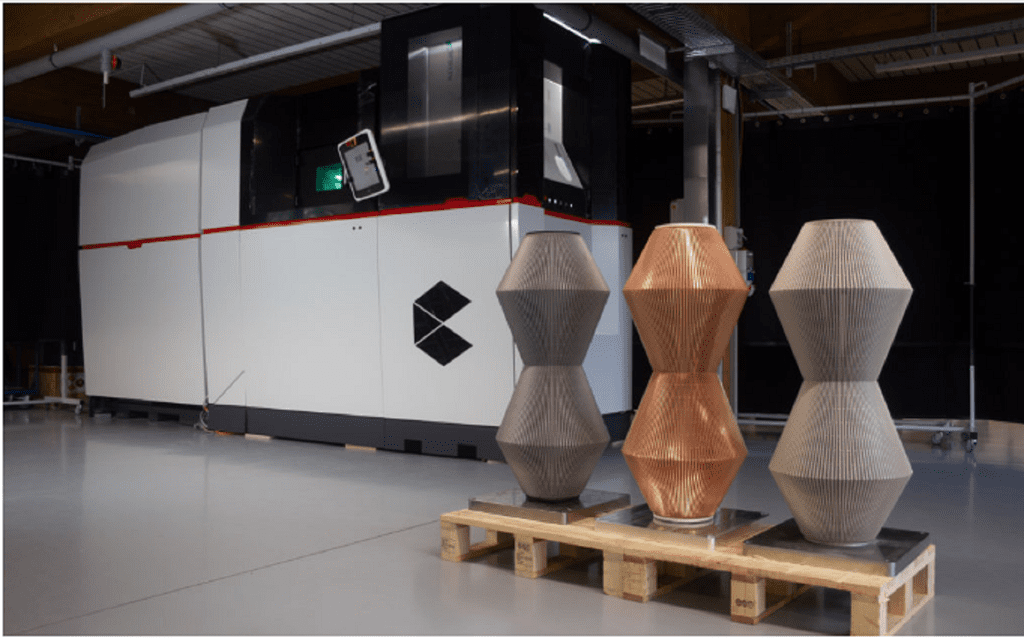Florida-based Sintavia has expanded its metal 3D printing capabilities in order to grow its capacity for 3D printing rocket parts. The printers it has acquired are no ordinary metal 3D printing systems, but M4K-4 machines from AMCM in Germany. The 3D printers are modified versions of EOS M400-4 systems, more than double the height of the original EOS machine.
Sintavia has purchased two more M4K-4 systems with which to 3D print rocket parts. The company bills itself as “one of the largest rocket printers in North America,” having grown quite significantly in the past few years. In addition to developing a method for 3D printing aluminum and opening a new additive manufacturing facility, Sintavia acquired QC Laboratories to extend its testing of 3D printed parts. In 2018, it became the first company to receive approval for 3D printing parts for Honeywell Aerospace.

All of this has been helped in part by investments from Japan’s Sumitomo Corporation, which most recently infused Sintavia with further funds in August 2020. The investment surely aided in the company’s decision to purchase two more machines from AMCM. A subsidiary of EOS, AMCM develops custom 3D printers when standard systems were not suitable for their applications.
Whereas the industry-proven M400 has a build volume of 450 mm x 450 mm x 450 mm, the M4K series has a build volume of 450 mm x 450 mm x 1000 mm—that is one meter in height. Both the M400 and M4K are available in single 1kW laser (M400-1/M4K-1) or quad 1kW laser (M400-4/M4K-4) versions. Other modifications the AMCM team can apply to custom 3D printers include changes in laser wavelength (e.g., blue or green for 3D printing with copper), adaptations for high-temperature materials, and variable spot sizes.

“Since the acquisition of our first M400-4 three years ago, Sintavia has devoted tremendous resources to developing successful and repeatable operating procedures for the quad laser printing of extremely thin walls, such as those found in the thrust chamber of a rocket,” said Brian Neff, Sintavia’s Chief Executive Officer. “We now have eight M400-4 quad laser printers, and we expect that the successful strategies employed on the M400-4 will likewise work on these new M4K-4 units. We are pleased that we will be the first rocket printer in North America to offer the expanded footprint of the M4K-4 to our commercial space customers.”
The M4K-4 was designed in part due to the demand from commercial space launch businesses wishing to 3D print thrust chamber assemblies. This system is able to produce the entire assembly as a single unite, which includes optimized regenerative cooling passages. This, in turn saves time and costs associated with manufacturing the assemblies.
Sintavia will receive the new machines in June and July of 2021 and use them for the production of parts made from copper and nickel alloys. Sintavia isn’t the only one using M4K systems for the production of rocket parts. Brooklyn startup Launcher is relying on the technology to produce what it considers the world’s largest 3D printed liquid rocket engine combustion chamber in a single piece. There’s plenty of room in the new space industry for startups of all stripes and, now, we’re seeing that industry develop quite rapidly thanks to increasingly advanced additive manufacturing technology.
Head - Marketing at Indian 3D Printing Network. Communications is an integral part of an organisation. It is the image an organisation portrays to the intended target audience. Understanding the immense responsibility this puts on me and deliver accordingly has always been and will continue to be my objective.


